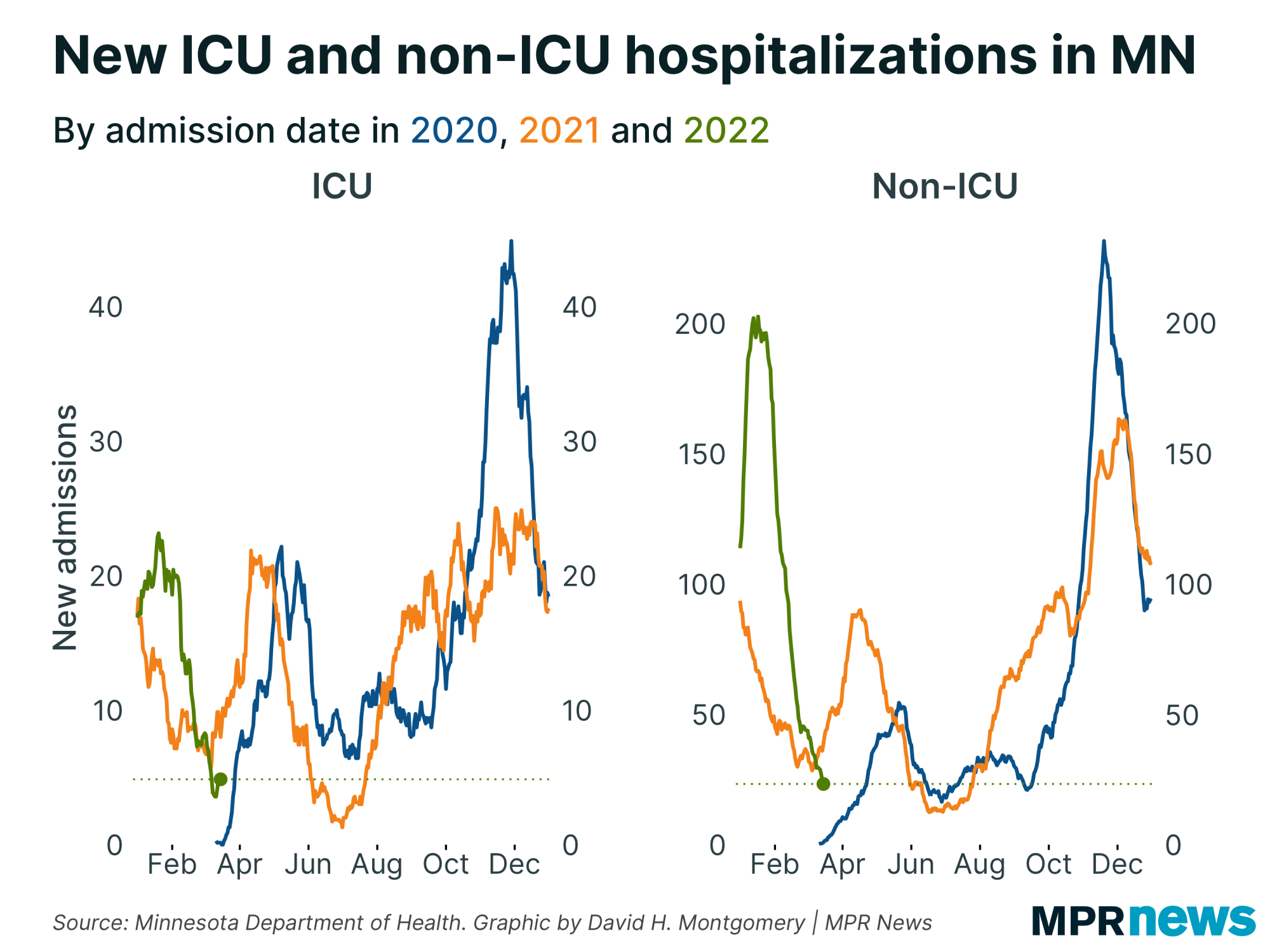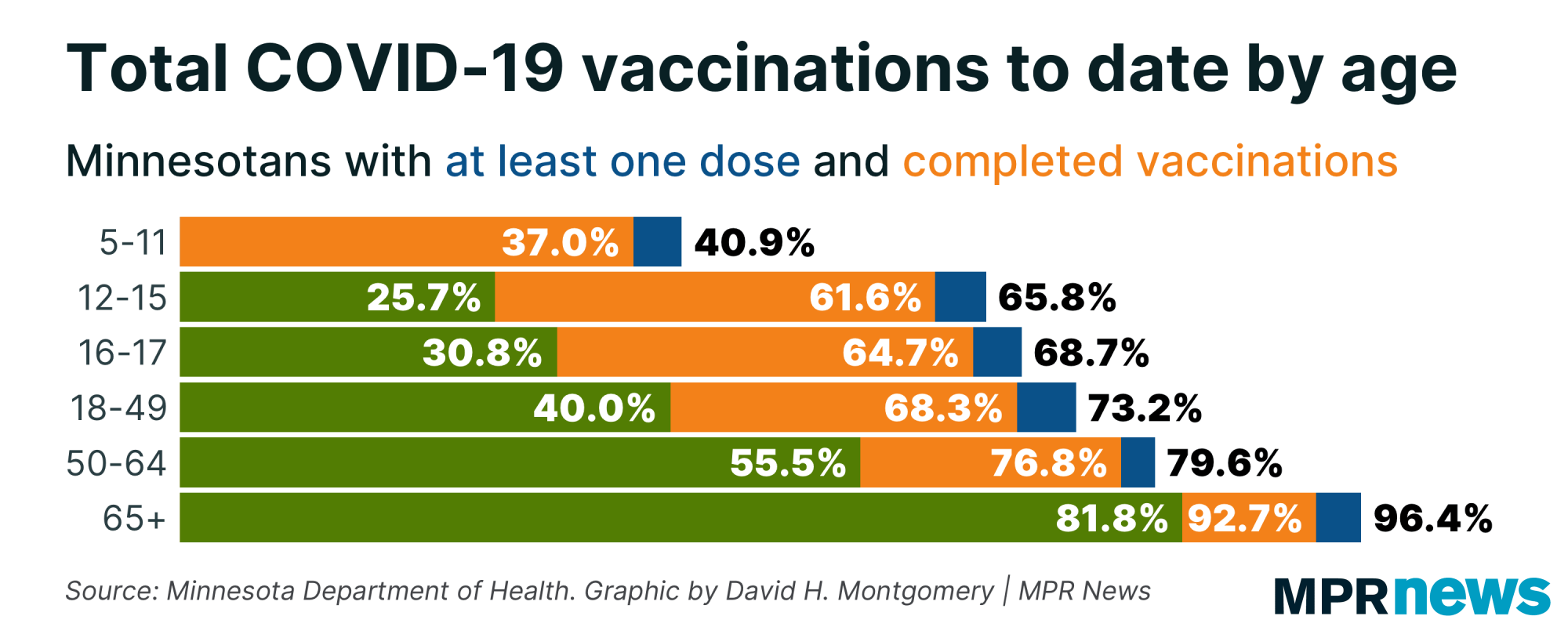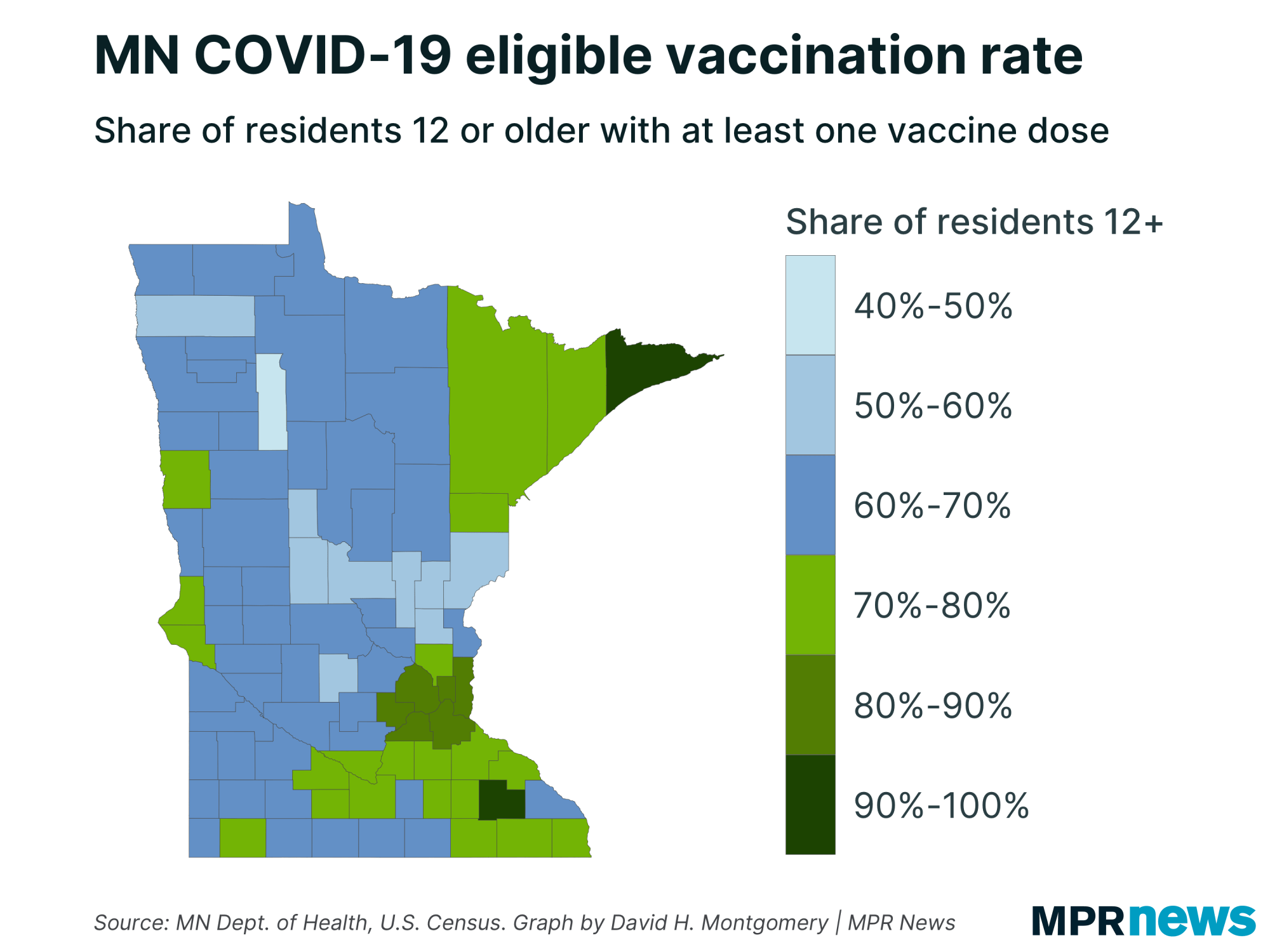COVID-19 in MN: Outlook still hopeful; state readies vaccines for kids 5-11

Go Deeper.
Create an account or log in to save stories.
Like this?
Thanks for liking this story! We have added it to a list of your favorite stories.
3 things to know:
1,810 newly confirmed or probable cases, 31 newly reported deaths
16,790 known, active cases; 911 currently hospitalized
74.6 percent of 16-and-older residents with at least one vaccine dose
Updated 2:42 p.m.
Despite some trend lines edging higher, Minnesota’s overall COVID-19 data is still signaling the worst of the current wave may be over. State officials are turning their vaccination focus now to some of the state’s youngest soon-to-be eligible residents.
Known, active cases came in at 16,790 Wednesday with 1,810 new daily cases reported. Both metrics are down to their lowest points in more than a month.

The rate of COVID-19 tests coming back positive has stabilized below 7 percent, according to MPR News calculations — higher than the 5 percent officials find concerning but still with no signs of a spike.
Hospitalizations continue to pull back from their recent highs.
Turn Up Your Support
MPR News helps you turn down the noise and build shared understanding. Turn up your support for this public resource and keep trusted journalism accessible to all.
Bed counts had topped 1,000 earlier this month, putting huge pressure on the state’s short-staffed care systems, but hospitalizations have dipped in reports posted through the week. There are 911 people in Minnesota hospitals now with COVID; 220 need intensive care.

State public health leaders continue to emphasize that Minnesota’s COVID-19 numbers are still relatively high and another surge is possible. They continue to plead with Minnesotans to stay vigilant against the disease and get vaccinated if eligible.

Driven by the highly contagious delta variant, the entire state, except for Cook County in the Arrowhead region, shows a high level of COVID-19 transmission, according to the Centers for Disease Control and Prevention.
The state's death toll stands at 8,612, including 31 deaths newly reported on Wednesday. Deaths typically follow a surge in cases and hospitalizations. In past COVID-19 waves, it’s been the last of the key metrics to improve.

Thanks to vaccinations, Minnesota remains better positioned now than during its fall and spring spikes. More than 73 percent of state residents age 12 and older have received at least one vaccination shot, with 70 percent now completely vaccinated.

The struggle continues, however, to get more Minnesotans vaccinated, and wide gaps remain in the vaccination rates among regions and counties.

State readies vaccinations for kids ages 5-11
State officials say they’re preparing to vaccinate thousands of Minnesota kids ages 5 to 11 after a federal regulatory panel gave the initial OK to use the Pfizer vaccine.
The state’s health care providers will be ready to start giving the COVID-19 Pfizer vaccine to 5-to-11-year-olds once the federal recommendations are finalized next week, Gov. Tim Walz said in a statement Wednesday.
Based on the timeline, providers say they could be ready to give shots as early as Nov. 4. There are about 500,000 kids in that age group. Minnesota Health Commissioner Jan Malcolm said this week that Minnesota will have 170,000 shots ready to go once federal authorities give the green light. On Wednesday, she said another 85,000 doses will go directly to pharmacies.
Malcolm called the coming vaccination effort “truly good news” in the effort to protect children from COVID, noting that Minnesota’s seen more than 45,000 pediatric cases of the disease reported since July, with 300 hospitalizations.
In Dakota County, officials anticipate being able to offer about 200 doses to kids the week of Nov. 8. That number may increase or decrease in subsequent weeks based on demand, said Christine Lees, the county’s public health supervisor.
Parents can also expect there to be opportunities to get kids vaccinated at school, Lees said.
"What we are working on is really trying to fill in the gaps around our primary care clinics, and pediatric clinics," Lees added. "So what's different this time round is that we have more providers that are able to offer the vaccine than we had before when we started with adults."

Children are far less likely than adults to become gravely ill with COVID-19, to be hospitalized for it or die from it, but that doesn't mean parents should hesitate to get their children vaccinated against the virus, said Dr. Nipunie Rajapakse, a pediatric infectious disease expert at Mayo Clinic.
"It is relatively uncommon for children to end up in ICU or to die from COVID-19," she said. "But from having spoken to parents and children who have ended up in the ICU, I can say rare doesn't really feel rare when it's your your own child sitting in that ICU bed."
Rajapakse said that clinical trials show that some children may experience mild side effects from the Pfizer vaccine, including sore legs or arms and some fatigue.
She added that getting children vaccinated against the virus also reduces transmission of COVID-19, limiting the opportunities the virus has to mutate into something more contagious or more deadly.
Listen to Wednesday’s COVID-19 briefing from state public health leaders:


